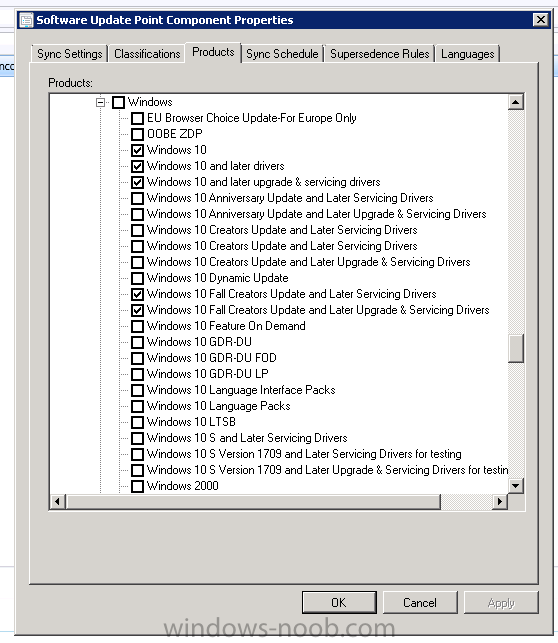
speall
Established Members-
Posts
6 -
Joined
-
Last visited
Everything posted by speall
-
Hi All, We are having some problems with windows updates to our server 2016 devices. We are using the latest current branch of SCCM on a server 2008r2 server. We have a set of server 2016 servers which are not getting the latest updates despite the client being installed and working. If we run a report from the server querying the updates available from our SCCM server we are given indication that there are no updates available however if we run the same test against internet based updates from microsoft we are shown that there are about 6 or so updates missing and available. If I search through the update catalog in SCCM for the updates that are not discovered from that server but ARE from online windows update, I can find them and they are listed as downloaded and deployed... It is my understanding that SCCM can only report on updates that it deploys so we dont want to install any updates from the internet because this will break our reporting which is currently able to successfully report from the 2016 servers presumably meaning that updates to these servers from SCCM are working. My question really is why is SCCM not showing the updates to the 2016 servers despite the fact that the updates are downloaded, deployed and in the automatic deployment rules? Thanks, Simon
-
Thanks for the response although it seems a bit counter intuitive to provide the ability to include drivers in the catalog if it causes a problem. We aren't really that concerned about the WSUS catalog size really so it is a question of whether it is possible to get updates this way? We have quite a lot of different devices that will be imaged from our windows 10 gold image which is why we are trying to avoid the driver deployment at the task sequence level. If it cant be done then it cant be done and we will move to the task sequence method. Thanks, Simon
- 3 replies
-
- sccm
- windows 10
-
(and 2 more)
Tagged with:
-
Hi, We are currently looking at deploying windows 10 education 1610 across our corporate network (we are a college). The gold image has been created and successfully deployed to machines however we are finding that there are some drivers missing from the machines on completion. I know that drivers can be added into SCCM as packages to be used in the deployments but since we dont run on a standard model of machine this can become a bit of a laborious process. We noted that when you install a standard version of windows in a non corporate environment, windows will try to find drivers for unknown devices via windows update. Obviously updates within the network are controlled by SCCM but what we want to be in a situation where a machine is imaged and then windows update searches for any missing drivers. We have updated the configuration of the updates within SCCM to include updates for windows 10 and servicing to hopefully enable this (see the below images). I think really we need to know if what we want to do is actually possible within the scope of SCCM or if we are going to have to stick to the classic method of creating and importing numerous driver packages each time we add new hardware to our network. Any advice from the experts would be most useful! Thanks, Simon
- 3 replies
-
- sccm
- windows 10
-
(and 2 more)
Tagged with:
-
Can SCCM2012 report on updates installed by windows update?
speall replied to speall's topic in Configuration Manager 2012
What we are trying to do is to simplify things down because currently we have separate deployments for each windows and server OS. If we switched down to having two groups for example (all servers and all clients) will this mean that windows 7 clients would receive updates that are aimed for windows 8 clients but fail to install? Are superseded updates removed from the update packages automatically? The idea we are considering is having one deployment that contains all of the updates which is pushed out every day at a specified time to all devices, the idea being to minimize the chance that a client or server will miss a key update and be compromised. -
Can SCCM2012 report on updates installed by windows update?
speall replied to speall's topic in Configuration Manager 2012
Hi Garth, thanks for responding. I believe we wanted the servers to pick up updates as soon as they released rather than having them on the same schedule as our clients, but if the reporting wont work we will have to look at another method presumably creating a different schedule for the servers through SCCM. -
Hi, First post, relatively new to SCCM but I have a question. We upgrading our servers to 2012 r2 and 2016 but don't want to use SCCM to manage updates for them. They are currently set to download and install updates via Windows update but I am unsure whether this will mean that SCCM will be unable to report on the status of installed updates for those servers. Is it only able to identify the status of updates deployed by itself? Thanks, Simon


